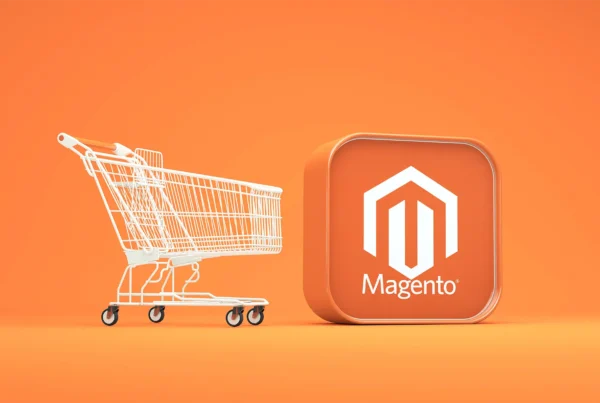
A deep dive into 90s nostalgia will likely reveal the ubiquitous sound of a dial-up internet connection as the world began to connect virtually through the “world wide web.” However, that all changed as broadband connections gained steam in the early 2000s. In fact, in 2000, dial-up usage sat at about 34% in the U.S., which fell to 3% in 2013.
Today, dial-up internet access is nearly extinct in favor of much faster, more efficient WiFi networks.
So, what’s next for the world wide web?
Turns out, that it’s already happening. Quantum technology is currently in development worldwide, but it isn’t mainstream – yet. Those in the business of science and technology are calling the Quantum Internet the next generation of online, and we’re going to do our best to explain this somewhat fantastical technology in this article, including what it is, how it works, and much more.
What Is Quantum Internet?
Hollywood has been prepping us for quantum technology for decades – think Star Trek and Quantum Leap, for example. So what is it? Given that Albert Einstein once described the basic quantum principle as “spooky action at a distance1”, we’re going to do our best to explain what one of the world’s most famous physicists had a hard time describing.
The quantum internet is a network that will let quantum devices exchange information within an environment that harnesses the difficult-to-explain laws of quantum mechanics. The process used to send information is called teleportation. Yes, like on Star Trek.
“Teleportation is like what you know from science fiction,” Ronald Hanson, an experimental physicist, co-founder of QuTech, and a Distinguished Professor at the Delft University of Technology, explains in an interview. “The information disappears on my side and appears on your side, but it doesn’t travel the space between us…It’s an extremely powerful method for sending information.”
Okay, now that we know magic is real, let’s try to make sense of how the quantum internet will work in the words of regular folks, not physicists—deep breaths.
How Does Quantum Internet Work?
Let’s begin with this idea of teleportation since it’s this crazy ability that fundamentally forms a quantum network. Without the ability to transfer information via teleportation, the quantum internet wouldn’t be possible. However, this process is not akin to Star Trek’s teleporting of Captain Kirk to a strange planet because we’re not dealing with humans or organic matter on quantum networks. Instead, we’re dealing with information, and in the world of quantum mechanics, information is called quantum bits, a.k.a., qubits.
So, what are qubits? Let’s look at it this way – our internet today uses bits, which are a combination of 0s and 1s, to form everything online, like websites, etc. However, qubits cannot be sent the same way as traditional bits. Today’s bits travel via light (ex: fiber optic cables) or radio waves. Unfortunately for science, the photons carrying qubits can quickly degrade using those same methods. So the big brains had to find a different way to send quantum information by using teleportation – and they call it quantum entanglement.
This obscure process of quantum entanglement that we do not even fully understand is what connects information between quantum computers on a quantum network. Simply put, adding information, such as a message or data, to a particle in one location will make the data appear at another location, which is the essence of teleportation. Simple, right?
How Fast Would Quantum Internet Be?
The quantum internet in action will be fast. Faster than today’s internet? Absolutely. For example, a quantum computer can answer a complex math problem in minutes that would take a powerful supercomputer thousands of years to figure out.
So given a quantum computer’s speed, it’s easy to see how a quantum internet will also be “Roadrunner” speedy. But just how fast? Well, experts say that the quantum internet will be able to transmit large volumes of data across quantum devices over immense distances at a rate that exceeds the speed of light.
When Will Quantum Internet Be Available?
Don’t expect to be using the quantum internet at home anytime soon – like the next couple of decades soon. Although quantum computers already exist, the quantum internet is still in the prototype phase. “We are now building small quantum networks in the lab,” explains Ronald Hanson. “But the idea is to eventually build a quantum internet.” The same efforts are happening across the globe as governments, academic labs, start-ups, and tech giants are spending billions of dollars to explore and develop the technology.
In the U.S., the Department of Energy (DoE) published2 the first blueprint of its kind, laying out a step-by-step strategy to make the quantum internet a reality. Project leaders claim it will “metamorphize our entire way of life,” and nearly $625 million in federal funding is expected to fund the efforts. So, this is just the beginning of the process as experts work diligently to test and scale up the tech that will power a new quantum communication era.
What Is the Difference Between Standard & Quantum Internet Technology?
Thanks to the mysteries of quantum physics, quantum networks of the future will have some advantages over our current internet technology. First, as we’ve already mentioned, it will be incredibly, undetectably fast.
Also, tomorrow’s quantum networks will also be inherently secure because qubits rely on the physical properties of photons rather than vulnerable code. So, qubits cannot be intercepted, which makes it nearly impossible to hack quantum messages.
However, despite these advantages, experts do not expect a quantum internet to replace standard internet technology. Instead, the two will likely co-exist for quite some time and functionally complement each other.
As creatives and strategists with an eye on the future of digital marketing, we like to keep a finger on the pulse of innovation at Living Proof Creative. We are as tenacious about finding new ways to improve and elevate digital marketing strategies as we are about creating groundbreaking designs.





